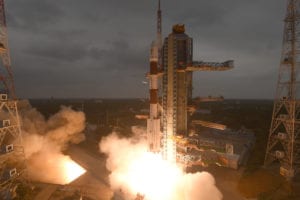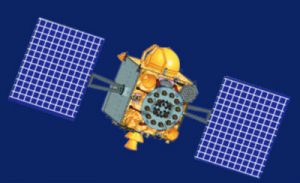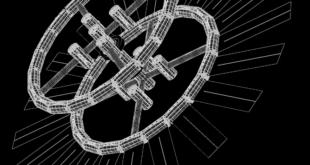
By Kartik Bommakanti
Beyond space launches, India and the U.S. have started cooperating in the area of Satellite Navigation.
Since the 2000s, India and the U.S. have forged ahead and sought to intensify civilian and commercial cooperation in the domain of space. U.S.-India space cooperation have come a long way since the 1960s. Washington played a vital role in laying the foundations of the Indian space programme. The U.S. helped in establishing the Thumba Equatorial Rocket Launch (TERL), Thiruvananthapuram and transferred sounding rockets such as the Nike-Apache, which was launched from the TERL. U.S.-India space cooperation has witnessed growth since 2008 when the Indian Space Research Organisation (ISRO) as part of India’s first deep space mission the Chandrayaan-1 to the Moon carried two scientific payloads — the Moon Mineralogy Mapper (M3) and Miniature Synthetic Aperture (MiniSar). In 2006, the ISRO and its American counterpart National Aeronautics and Space Administration (NASA) signed a Memorandum of Understanding (MoU), which enabled the NASA payloads to be part of the lunar mission under the aegis of the U.S. administration led by George W. Bush. The Bush Administration pushed for improved strategic ties starting with the 2004 launch of the Next Steps in Strategic Partnership (NSSP) between United States and India. Since then in a little over a decade, U.S.-India space cooperation has intensified at a brisk pace, particularly involving the American private sector, which has found India’s space launch services attractive and economical. However, before we address the key developments in U.S.-India space relations in recent years, we need to survey the issues that divided New Delhi and Washington for decades.
The single most important factor that the afflicted bilateral relationship was nuclear non-proliferation. India, a non-signatory and an outlier of the Nuclear Non-proliferation Treaty (NPT) and regime found itself locked in a highly frictional and disputatious relationship with Washington. Relations soured starting with the India’s first nuclear test on 1974, U.S.-India cooperation suffered in a core strategic sector in the area civilian nuclear energy. Space cooperation became a casualty following the launch of India’s first Space Launch Vehicle (SLV-3) in 1980. In 1987, the Missile Technology Control Regime (MTCR) prohibited transfer of dual technologies targeting India as well as several other countries and a spate of sanctions and restriction from Washington’s end ensued. Through the course of the 1980s and the 1990s, India and the United States found themselves entrapped in a non-proliferation narrative. Following a hiatus of over two decades, the bilateral space relationship started to limp back to normalcy under the Bush Administration. The latter was crucial in overcoming the baggage of history and helping make a break from the past paving the way for the India-U.S. High Technology Cooperation Group (HTCG) a part of the NSSP. HTCG was constituted to identify areas of high technology cooperation and space cooperation was a vital area of focus for the HTCG.
The ISRO’s PSLV has been highly efficient and attractive low-cost launch option for small satellites built by the American private sector. How long this will endure is uncertain as American private sector majors in the space such as SpaceX are intensively investing in Reusable Launch Vehicle (RLV) technology to provide an even cheaper and competitive option than what the ISRO could offer in the form of the PSLV.

Due to the dual-use nature of space and missile technology, concerns and objections were raised over India’s growing missile capabilities boosting India’s key missile and warhead expertise. Critics especially in the U.S. argued, since there was a link between dispensing multiple satellites and dispensing warheads potentially enabling India to integrate Multiple Independently Targetable Re-entry Vehicles (MIRVs) containing nuclear warheads if India were to launch American scientific payloads and satellites into orbit using Indian space launch vehicles. Yet these ominous possibilities of India deriving technological gains by launching American satellites were more alarmist and fictional than factual as this author’ extensive analysis over a decade ago clearly demonstrated and refuted. Nevertheless, it took several years and exchanges following the conclusion of the NSSP and extensive interactions at the highest official levels for deeper engagement before India and the United States were able to overcome the inhibitions of the past for the launch of the first set of American satellites. Indeed, it took the passage of seven years following the launch of the two NASA funded payloads that piggybacked aboard the Chandrayaan-I, before Antrix Corporation Limited in 2015, the commercial arm of the ISRO consummated an agreement with Google Skybox Imaging to launch nine micro satellites with each spacecraft weighing 100 kilograms. The first American satellites were four identical LEMUR remote sensing satellites launched in September 2015. Subsequent to this launch the ISRO’s highly reliable Polar Satellite Launch Vehicle (PSLV) has launched several satellites built by the American private sector. In the latest launch on 27 November, a variant of the PSLV placed thirteen commercial nano satellites from the U.S. in their designated orbit. They were launched as part of a contract between New Space India Limited (NSIL), which is now the commercial arm responsible for small satellite related ventures that includes transfer of technology to the private sector as well as a range of other commercial space related activities catering to the needs of domestic industry and international demand. Overall, the ISRO’s PSLV has been highly efficient and attractive low-cost launch option for small satellites built by the American private sector. How long this will endure is uncertain as American private sector majors in space such as SpaceX are intensively investing in Reusable Launch Vehicle (RLV) technology to provide an even cheaper and competitive option than what the ISRO could offer in the form of the PSLV.

Nevertheless, beyond space launches, India and the U.S. have started cooperating in the area of Satellite Navigation (SatNav). The United States Congress earlier this month decided in principle, if not yet formally, to designate the Indian Regional Navigation Satellite System (IRNSS) or better known as the NaVIC as an “allied system”. According allied status to the NaVIC is part of a larger effort on the part of Washington to develop a “prototype” programme with underlying objective of establishing “multi-global” SatNav system. In addition, American private sector companies such as Qualcomm Technologies have concluded an agreement with ISRO to support the NaVIC’s geolocation capabilities in its chipset platforms that will enable better mobile services and Internet performance. All this represents important progress and as ISRO’s capacities grow further, more significant scientific exploration could crystallise for deep space missions as well as initiatives that are more limited.
Although in recent years, despite evident dismay in official Washington about the trajectory of defence relations between New Delhi and Washington, steadily, if not dizzyingly improving space ties are a positive aspect and offer both countries something to augment and celebrate.

Kartik Bommakanti is Associate Fellow with the Strategic Studies Programme at the Observer Research Foundation (ORF) in New Delhi, India. He is currently working on a project centered on India’s Space Military Strategy vis-à-vis China. Bommakanti broadly specialises in space military issues, and more specifically the relationship between the space medium and terrestrial warfare. Space military issues as the focus of his research is primarily on the Asia-Pacific. Kartik also works on nuclear, conventional and sub-conventional coercion, particularly in the context of the Indian subcontinent and the role of great powers in the Subcontinent’s strategic dynamics. He has published in peer reviewed journals. Kartik holds a BA (Hons.) from Flinders University in Adelaide, Australia; an MA in International Policy Studies from the Monterey Institute of International Studies, Middlebury College, in the United States; and an MRes in War Studies from King’s College London.
This essay was originally published by the Observer Research Foundation on 16 December 2019 here, and is republished by SpaceWatch.Global with ORF’s kind permission.





